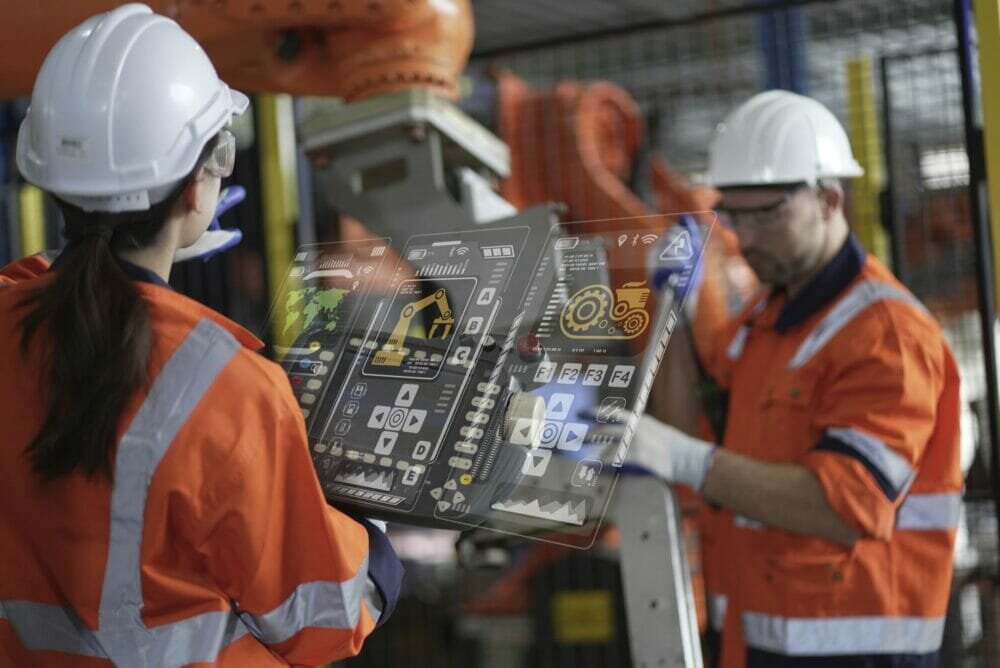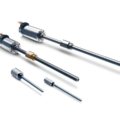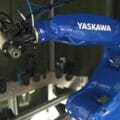What are the current manufacturing challenges? A lack of experienced engineers and technicians in the field is just one example, but, unfortunately, there are several other challenges. As a result, leveraging artificial intelligence (AI) has helped many manufacturing organisations address and solve these problems.
Current challenges facing manufacturing
So, what are the challenges faced by the manufacturing industry today? Below find some of the main issues manufacturers are working to address:
- Labour shortage – lack of experienced engineers and technicians, especially on-site
- Increasing demands for product quality improvement and cost reduction
- Shorter product life cycle
- Intensifying competition due to globalisation of the business environment
- Diversification and internationalisation of employees
Artificial Intelligence is already being deployed to solve these issues with the following capabilities.
Lack of experienced engineers and technicians on site
It’s no secret that product design and development skills are difficult to learn and master. Similarly, the skills to perform inspections, the operation and maintenance of manufacturing equipment, and the assembly of products safely, quickly, and with high accuracy cannot be acquired overnight. Talented engineers and technicians with these skills are entering a mass retirement period, and the labour shortage is serious. Retirement extension and re-employment systems are in place, but passing on these techniques and skills to the next generation is vital.
Increasing demand for improved product quality and reduced costs
This increasing demand for improved product quality and reduced costs is an “eternal issue” for the manufacturing industry. Most traditional activities, such as small group activities and cost reduction activities, address this challenge. However, with the rapid changes in the business environment over the recent years, rather than solving this problem, the hurdles are increasing. Gone are the days when a new product was released and sold efficiently. It is essential to accurately analyse and understand consumers’ purchasing behaviours at the product planning stage. In other words, there is a demand for high-quality, low-cost products that meet consumer needs to the market.
Shorter product life cycle
The life cycle of bringing a product to market has shortened. This means the production of parts must be mass-manufactured to see a quick return on investment (ROI). Because of this, the optimisation of the entire production process is crucial.
Intensifying competition due to globalisation of the business environment
In today’s manufacturing industry, overseas production has become the norm. We are now in an era where products cannot only be sold in developed countries. The target markets for the manufacturing industry are expanding to include more diverse regions than ever before, including emerging countries. Under these circumstances, it is necessary to develop products that meet the market needs of each region and conduct marketing activities in a more detailed manner.
Here’s an example that proves how critical it is to plan products that match the region. Not too long ago, when the Japanese economy suffered from the “lost two decades,” two major LCD TV manufacturers competed for market share in India. One company’s product was cheaper and had the largest share. The other company did thorough research into the colours of TV screens Indian consumers preferred. It discovered that they prefer bright reds over plain reds.
Fortunately, the company’s product changed the colour balance of the screen with only a slight modification to the software. When the modification was made and the new product was introduced to the market, the reputation was “a little expensive, but the colour is good.” One year later, the company succeeded in taking top market share.
The sense of colour is subtly different for everyone, and it also differs by ethnicity and region. For example, in China, the word “red” means a colour close to vermillion. People in Europe and Japan have different preferred colour temperatures, meaning popular lighting colours are different. These factors must be considered when planning products that require image quality, such as LCD TVs and digital cameras.
Diversification and internationalisation of employees
The manufacturing industry is global. This means that employees working for these global manufacturing companies are geographically spread across the world. They live in different countries and come from very different backgrounds. Production activities must be carried out despite differences in values, thinking, and languages. Because of this, manufacturers need to overcome language and cultural barriers to ensure employees and teams work well together.
Solving manufacturing issues with AI
Although some of these challenges appear daunting, artificial intelligence technology has been proven to – or will in the future – help mitigate the problems listed above. Let’s look at how AI can be leveraged in manufacturing.
Labour shortages and AI
Manufacturing organisations are addressing the labour shortage by transferring the knowledge and skillset of talented engineers and technicians with AI. For example, during the learning process of inspections, an experienced inspector is shown a variety of inspection screens. They are asked to judge whether the product is good or bad. The results are then uploaded to the edge AI, built with Edge Computing, to perform actual product inspections. This puts less of a burden on older skilled engineers and technicians. It provides an advantage to the manufacturing company as they now have this critical judgment saved via AI.
Improving quality, reducing costs, and AI
It may seem simple, but to improve quality, it is essential not to produce defective products. To prevent this, it is imperative to perform equipment maintenance and inspection work. By arming manufacturing equipment with self-check functions leveraging artificial intelligence, failures can be discovered and predicted automatically. This technology has rapidly progressed in the last few years. As a result, equipment maintenance can be carried out by fewer people, reducing labour costs. Furthermore, real-time performance can be achieved using Edge Computing.
Shorter market cycles and AI
To respond to the shortening of the market life cycle, it is necessary to reduce production lead times. Production efficiencies largely depend on parts lead times, making it essential to manage their delivery. This is often considered a combinatorial optimisation problem. This is known as the act of finding the combination of variables that optimises a value from among many options under various constraints. Without AI, this can be extremely challenging to determine, which is why many manufacturing organisations are leveraging artificial intelligence to help.
Globalisation of the business environment and AI
In the LCD manufacturer example mentioned previously, big data analysis was used. But, in similar instances, having access to that data can make a huge difference. Currently, AI is being leveraged by many manufacturing organisations who run big data analysis to support fine-tuned marketing in various countries – including developing countries – proving that big data analysis and AI enable smarter marketing activities.
Diversification/internationalisation of employees and AI
With AI, speech recognition technology and automatic translation tools significantly help manufacturers support essential communication between colleagues. This is extremely helpful in enabling teams to collaborate efficiently. This is especially relevant as many manufacturing employees are geographically spread across the globe.
AI in other fields
AI is not just being used in the manufacturing industry. Other applications include leveraging AI for bioinformatics for drug discovery, material informatics, alloy design, and material discovery. There is also an example of using AI for optimised tyre shape design.
AI permeates the manufacturing industry
Above we have presented several examples of AI applications in the manufacturing industry. AI is a highly versatile technology, and if applied well, it can produce remarkable results. There may be other situations where the above applies.
Manufacturers have many processes spanning from product planning to development, manufacturing, and sales. As each process is connected – albeit in a complicated fashion – it is not easy to respond quickly to rapid changes in today’s business environment. Artificial intelligence is one tool that alleviates challenges within the manufacturing industry, especially when run via Edge Computing.
For more information, please visit www.stratus.comor follow on Twitter @StratusAlwaysOn.








